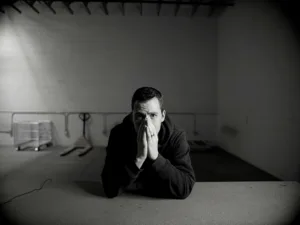By Alexis Ward, LMFT
Connection in relationships is one of the fundamental needs we all possess. Feeling seen, heard, understood, and regarded is an essential part of a healthy relationship. Though we all want and need these things in partnership, we often have very different ways of seeking them. Understanding your own strategy for seeking a connection can be a major breakthrough in your ability to access and receive the love and connection you desire.
There are two main connection strategies in relationships.
Most people can easily identify which they naturally gravitate towards, though the expression of each can vary widely and most of us are a mix of the two. Those two connection strategies are pursuit and avoidance. Here is a breakdown of the core characteristics of each:
The Avoider:
- Hesitant to talk about feelings
- Recharged by space and time to self
- Accustomed to being let down
- Feels uncomfortable with any type of dependency
- Often feels overwhelmed by their partner’s desire for intimacy
- Vulnerability feels challenging
- Highly sensitive to feeling pressured or criticized
- Self-reliant
- Uncomfortable with intimacy
- Retreats in times of stress
- More passive and less engaged in relationships
- Often perceived as cold, defensive, distant, shut down, or unavailable
The Pursuer:
- Needs to talk about feelings (though it may be a struggle to communicate effectively and without blame)
- Highly sensitive to experiences that feel like abandonment
- Reacts to stress by seeking engagement with partner
- Finds safety and comfort in validation from partner through communication and openness
- Often wishes for a deeper sense of intimacy with partners
- Typically perceived as critical, nagging, demanding, needy, or codependent
- Feels anxious and panicked when experiencing distance in partnership
- Receives partner’s need for space as rejection and abandonment
- Feels pressure to resolve issues immediately
Which of these connection in relationship strategies feels more familiar to you? Can you recognize your partner in the other role? Do you ever switch positions, and if so, when?
By deepening your understanding of which role you play in your relationships, you can begin to consciously balance your responses to those you love. By recognizing the fears that drive both ways of relating, we can begin to counteract those ineffective strategies by taking risks in exploring the opposite tendency. For instance, if you are typically The Avoider, slowing down to notice that you are withdrawing out of a fear of being vulnerable offers your the opportunity to try expressing that to your partner. If you are The Pursuer, taking responsibility for your fear of abandonment in the moment allows you to talk about that fear in a vulnerable way rather than pulling on your partner to resolve those feelings for you. In stepping out of unconscious reactivity and into self-awareness of these patterns, we open the door to less defensive, more heart-centered communication. From this place, all things are possible and the true essence of human connection can bloom.
If you are struggling with connection in your relationships, we can help you and your partner get to where you want to be.














